When Does Genevieve Talk About Being Young Again in the Last Picture Show

The first shot of The Last Film Show gives united states the Royal; an ageing, fleapit cinema in the dying Texas town of Anarene. The rise of boob tube is one reason this picture house is on the fashion out in 1951, of grade, but so is Anarene's entire way of life. And while the picture'due south directly autobiographical for co-writer Larry McMurtry, on whose novel it's based (he grew up in a similar town, and was born only a few years before the movie's leads), the end of this cinema and all it stands for is conspicuously symbolic for writer-director Peter Bogdanovich also.
Bogdanovich, who died this week at the historic period of 82 and whose masterpiece The Last Pic Evidence is, had been a picture journalist, movie historian, and arthouse programmer before he turned to filmmaking himself, and much of his screen work has movie house equally a backdrop if not a principal bailiwick. His debut as writer-director, Targets (1968), features an elderly horror thespian played past Boris Karloff every bit a primal grapheme, and has its extended climax at a drive-in theatre, complete with careful portrayals of the projection booth; What's Up, Md? (1972) recreates the screwball comedy genre of one-half a century earlier; Nickelodeon (1976) is prepare in the earth of silent filmmaking.
Indeed, several movies are directly featured in The Final Picture Prove. Its high-schoolhouse characters watch Father of the Bride (1950) at the outset and Ruby River (1948) at the terminate, a number of posters appear in-betwixt, and the back row of the Royal is a valued refuge for making out too. More importantly, though, the cinema represents all the things that movies mean–fantasies, dreams, risk—and the news of its closure seems to ostend that many of those volition soon be shut off for young people growing upwardly in this dead-end town.
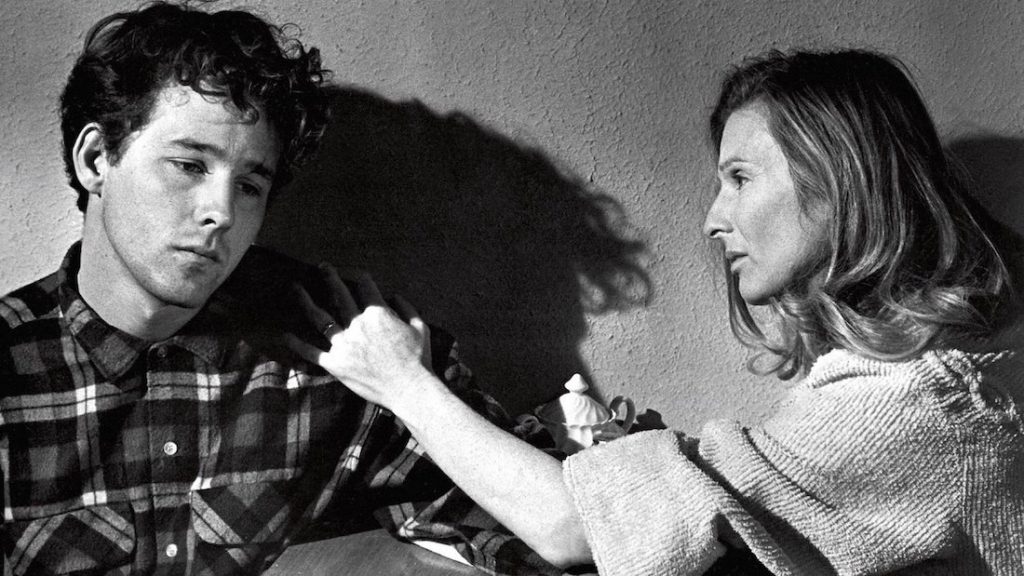
The cinema's owner, Sam (Ben Johnson in one of the flick's two University Honor-winning performances)—himself in one case immature, merely at present heart-aged and wiser but notwithstanding stuck in Anarene—could be a function model for boys like Sonny (Timothy Bottoms) and Duane (Jeff Bridges). But he could besides be a reminder of how potential for greater things might be squandered if they don't move on while they can.
Movie's inherent adequacy of capturing the by permanently is intrinsic to The Last Picture Prove, as well. For a movie that is, on the surface, more often than not about its characters looking forwards to the rest of their lives, it feels much more than like one preoccupied with memory.
The decision by Bogdanovich to shoot in blackness-and-white (equally suggested to him by Orson Welles) undoubtedly contributes to this sense that the unabridged world of The Last Picture Evidence is now irretrievably behind us, and information technology'south difficult to imagine the movie existence then poignant or haunting in Technicolor. Indeed, although it'south set far afterward than well-nigh westerns, The Concluding Moving picture Show has something in mutual with end-of-the-Old-W movies; the selection of Cherry River for the terminal show at the Royal is probably not accidental.
Bogdanovich starts with the Royal, then pans away across an empty street, finally ending upwardly on Sonny in his truck. Even the engine seems to take given up the ghost. He'll show u.s.a. the same empty street oftentimes, diddled with sand and dust, tumbleweed on one occasion. The absence of a score (the only music in The Final Picture Show is diegetic—country songs on the radio, etc.) adds to the bleakness and isolation. So does the simple, directly way of photography favoured past the director and his cinematographer Robert Surtees, a visual match to the elementary language of McMurtry's novel.
And the film will cease at the Regal too, dissolving to the cinema afterwards a last scene that is both heartbreaking and very tentatively optimistic—possibly the best scene in the unabridged film, one where Sonny just might have started to understand what adulthood and responsibility and friendship really hateful, and also one where another grapheme who seemed virtually destroyed might merely accept establish unexpected inner force.
Released in the U.s. toward the end of 1971, and then slowly appearing around the world during 1972, The Last Moving-picture show Testify follows the lives of a group of teens in Anarene over a few months during their last year at high schoolhouse.
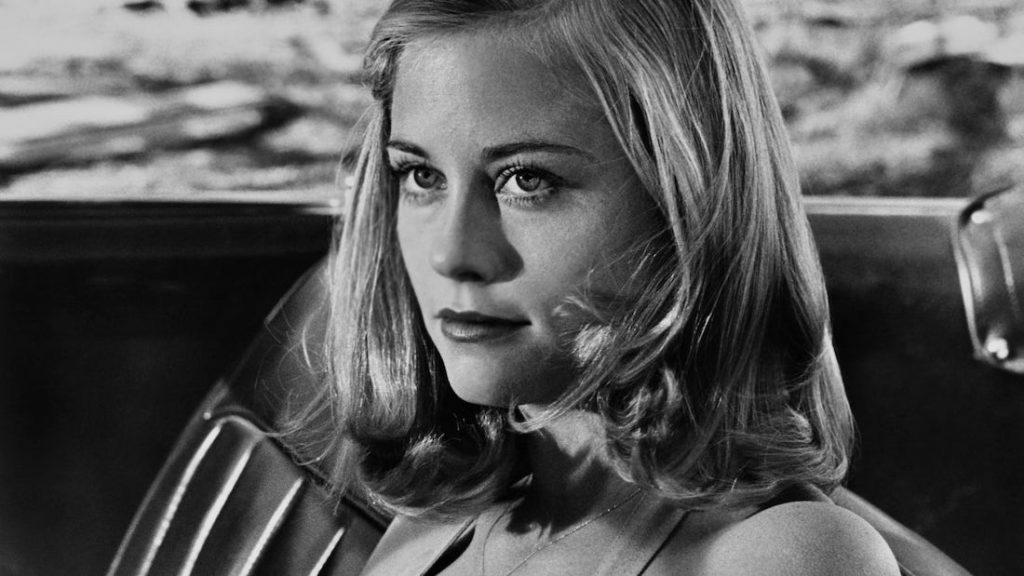
Salient among them are Sonny and Duane; also prominently featured are Jacy (Cybill Shepherd), seen as a prize past all the boys, Baton (Sam Bottoms)—a younger lad with learning difficulties—and Lester (Randy Quaid). Likewise equally the teenagers, the flick pays much attending to the adults with whom they interact, including Sam, who owns the pool hall and diner along with the cinema; Ruth (Cloris Leachman), solitary wife of the high school sports coach; Genevieve (Eileen Brennan), a waitress at the diner; and Lois (Ellen Burstyn), Jacy's mother.
Many of the events it portrays are large to the teenagers even if they might seem piddling to the adults—who's hooking up with who is inevitably a dominant question—but in that location are some genuinely big and tragic turns. Analene is "an atrocious pocket-sized town for whatever kind of carrying-on, and some people got a lot of guns", warns Genevieve, simply in fact the dangers encountered by Sonny, Duane and their crowd are almost all emotional.
The plot seems to canter as aimlessly as the tumbleweed, simply underneath it's tightly constructed by Bogdanovich. Perhaps most notably, although The Last Movie Show looks at first glance like a teen movie, in reality the interactions between teens and adults are at least as important equally those confined to the younger generation, possibly more than so. Bogdanovich here underlines again how the film is as much concerned with retention and things past as with the present or the optimistically anticipated future.
The extreme and subtle care with which The Terminal Picture Prove is synthetic is evident, likewise, in the fashion that many scenes and even individual shots echo one another. Jacy pretends to be in love with Duane, and tells him she doesn't want to become to a swim party with Lester, but in her face looking over Duane'south shoulder we can run across the truth is the opposite; Ruth seems shy and nervous in an encounter with Sonny that's critical to the story's development, but in her confront too calculation is visible.
Jacy gets to that swim party, where the ritual includes stripping on the diving board—a scene directed with a great sense of timing and humor, yet as well with more than serious intimations of the big and maybe irrevocable step she's taking away from Duane.
This is then mirrored in another of the picture'south virtually famous scenes, where Sam recalls to Sonny how he skinny-dipped with another girl 20 years ago, and a key line here sums up a question repeatedly posed by The Terminal Picture Prove: "being crazy 'bout a woman like her'due south always the right thing to practice. Bein' a decrepit former purse of bones – that's what's ridiculous, gettin' old…"
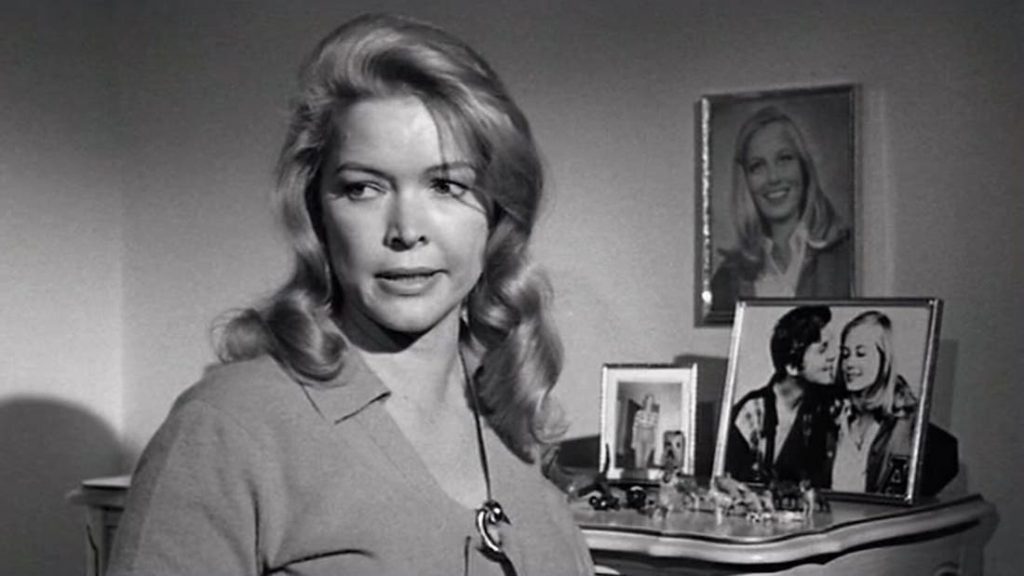
And this in plow is also echoed in a scene where Sonny and a woman undress. Over again, there's humour in the problems he has with taking off his boots, but for both of them, the act is also a possibly dangerous move into uncharted territory.
Sonny may learn an of import life lesson here: withal young and good-looking you lot might be, in that location is no way to remove socks while remaining cool, enigmatic and sexy. For The Last Picture show Show, however, the significance of the scene is in the way that it thematically links apparently disparate incidents, equally happens so often in this picture. (And there are other connections between the three cases I've mentioned hither, though explaining them would risk spoiling.)
Likewise the writing and Bogdanovich's unostentatious management, The Concluding Moving-picture show Show gains much from a terrific array of central performances, many of them past actors at the beginning of their careers who went on to exist notable names. None are one-dimensional, none are overdone.
Bridges'southward Duane and Bottoms's Sonny are best friends but a study in opposites too. Duane is straightforward and straight, possibly not terribly brilliant, often positive in his outlook but changeable too, and crafty at times (alone amid the grouping, he manages to avoid a potent rebuke from Sam by hiding). Sonny is more intelligent, though certainly not academic, and more introspective; quite probable he will plough into Sam some years down the line.
Leachman is outstanding every bit the coach'south ignored and desperately sad wife; she "can't seem to do anything without crying about it", she says, and the agonized need is visible in her face when we first run into her osculation another human being (a terrific brief scene). In a very unlike style, Burstyn excels as the much more confident mother Lois; her problem is not and then much loneliness equally boredom in this failing oil boondocks where a visit to the Rig-Wam bulldoze-in counts as excitement.
Jacy herself is peradventure taken a bit besides far by Shepherd; this manipulative teen goddess is maybe as well bad to exist true. But she's got great screen presence, as you lot'd await from someone Genevieve describes as "the kind of girl that brings out meanness in men". (Film critic Pauline Kael saw it slightly differently, considering Jacy "a projection of men's resentment of the bitch-princesses they're fatigued to".)
Brennan as Genevieve, for her function, balances Leachman and Burstyn with yet another kind of adult woman, one who seems to be happy in Anarene. Tolerant and perceptive, she is in many ways a female equivalent of Johnson's Sam. In smaller roles, meanwhile, Barc Doyle equally a preacher'due south son and Sharon Ullrick equally a girlfriend of Sonny's are both amusing and affecting in their cameos, while Quaid's Lester is memorable for his goofy smile.
The Last Picture Show was strongly applauded at the fourth dimension, and was a big hit on a pocket-sized upkeep (in the US information technology earned a lot more than the same twelvemonth's Shaft, for example, and wasn't far behind A Clockwork Orangish and Dingy Harry). Johnson and Leachman won Oscars; it was too nominated for 'Best Motion picture', 'All-time Direction' and 'All-time Screenplay', as well as for the performances of Burstyn and Bridges.
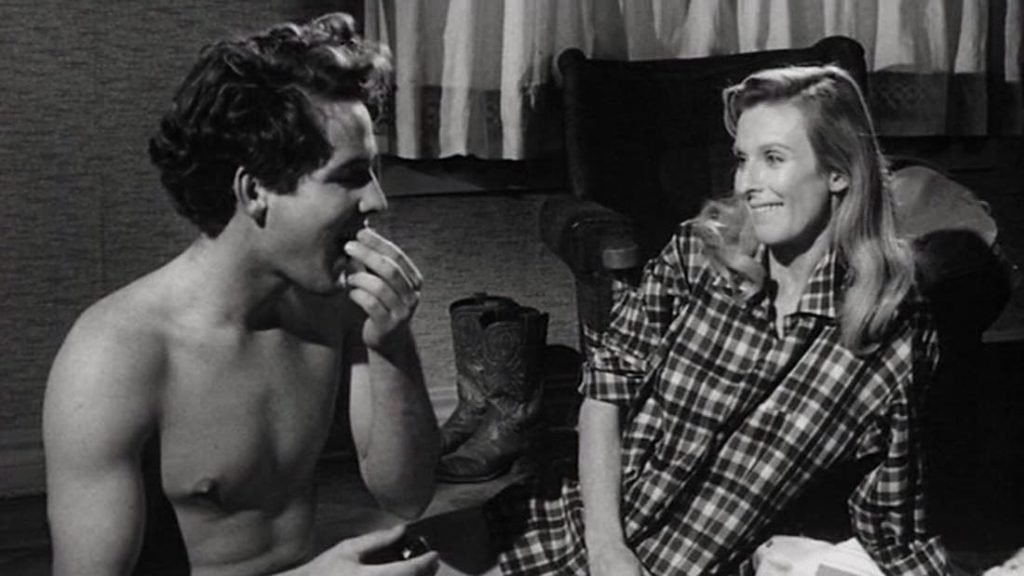
The film made Burstyn'south proper name, and Bridges was the biggest star to emerge from it. His performance is arguably meliorate than Bottoms', fifty-fifty if the latter's character is more interesting. Simply for many others in The Last Picture Testify's cast it was besides a major step forrad.
Bogdanovich struck the right note with audiences over again with What'south Up, Physician? (1972) and Paper Moon (1973), but then constitute it difficult to rebound from three successive failures in Daisy Miller (1974), At Long Last Love (1975) and Nickelodeon (1976), and is now best remembered for The Last Picture Show.
A Director'south Cut was released in 1992 (the most important add-on beingness a scene where Jacy has sex with an older man and is then disappointed he won't follow it upwardly with affection, saying much nearly her existent needs). The 1990 sequel Texasville—also written and directed past Bogdanovich, based on another of the five McMurtry novels gear up in The Last Picture Evidence's world, and featuring many of its main cast—wasn't well received at the box role or critically, and is all but forgotten now.
The Terminal Picture Prove, though, volition non exist forgotten. There are many films about growing up or growing erstwhile, or well-nigh loss, and many elegies to vanishing means of life. What distinguishes Bogdanovich's great moving picture is non what information technology has to say, but the utterly honest way in which it expresses that. As David Thomson wrote it is "a French film fabricated in the West, with few illusions and no concession to romance".
Not a thing in this film comes even shut to existence overstated, and that makes the emotional experiences of its characters—occasionally shouted about, just oft implied—all the more than powerful. Every bit chiefly, Bogdanovich and McMurtry never guess them (and there are certainly some bad things done in The Last Film Prove).
There may not be a "message", merely if there is 1 maybe The Last Picture Testify is almost making the case against nostalgia, and saying that—as Sam hints—it'south better to live in the at present rather than gnawing at the by, or scheming for the future.
The last words of the movie get to Ruth, consoling another character, and she could well exist making that point also. "Never you mind," she says. "Never you lot heed." This is life: worth information technology, whatever information technology throws at you, even in dusty Anarene.
Usa | 1971 | 118 MINUTES • 126 MINUTES (DIRECTOR'S CUT) | 1.85:1 | Black & WHITE | English

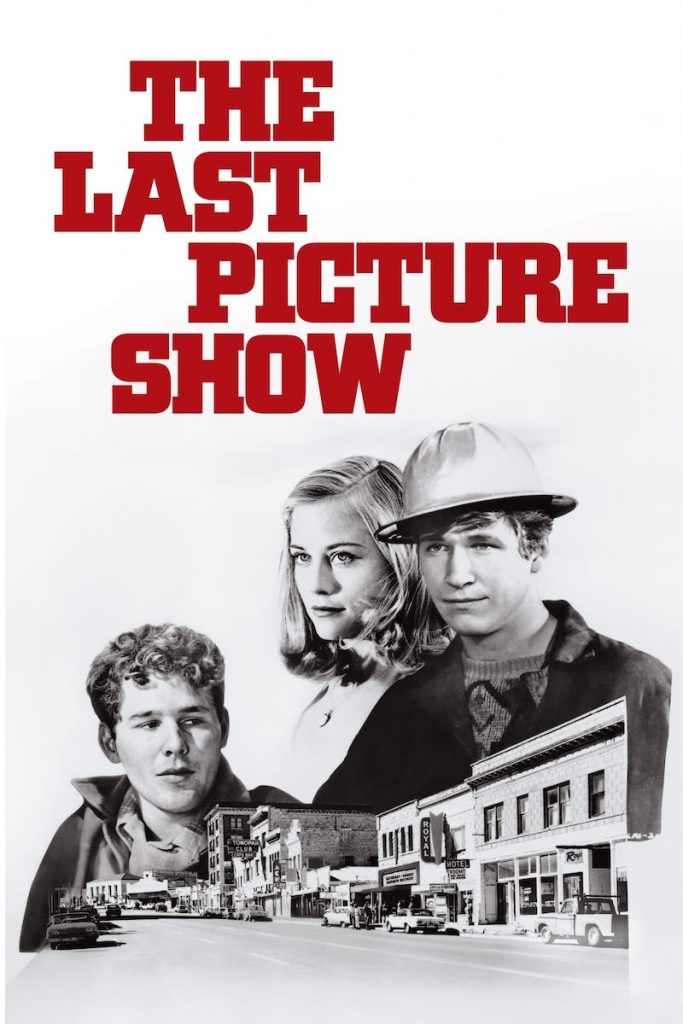
Cast & Coiffure
manager: Peter Bogdanovich.
writers: Larry McMurtry & Peter Bogdanovich (based on the novel past Larry McMurtry).
starring: Timothy Bottoms, Jeff Bridges, Cybill Shepherd, Ben Johnson, Cloris Leachman, Ellen Burstyn & Randy Quaid.
Source: https://www.framerated.co.uk/last-picture-show-1971/